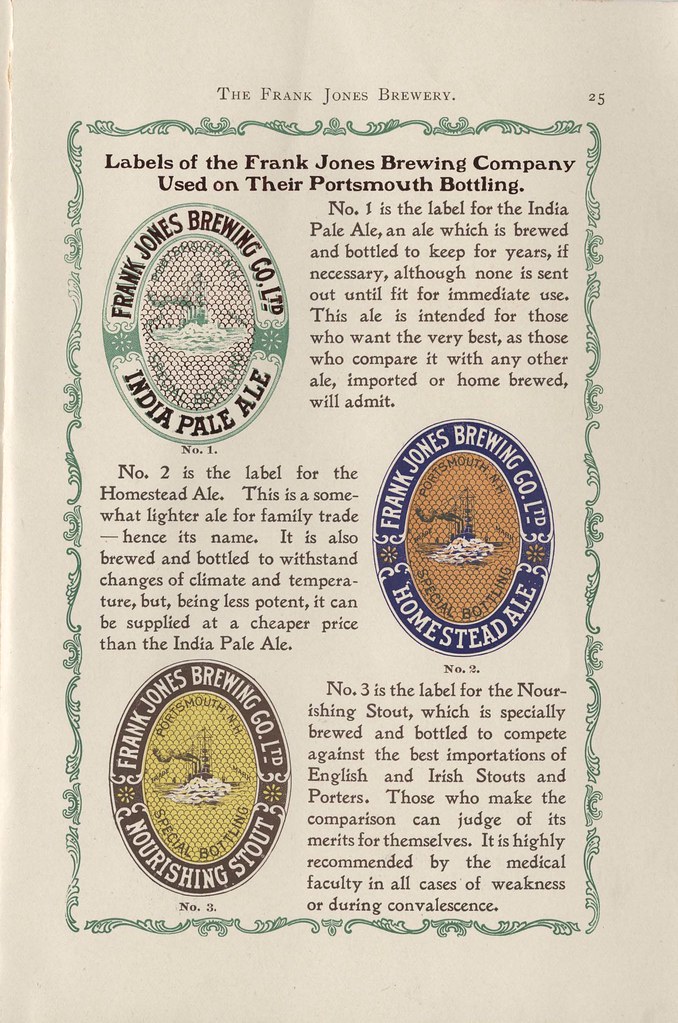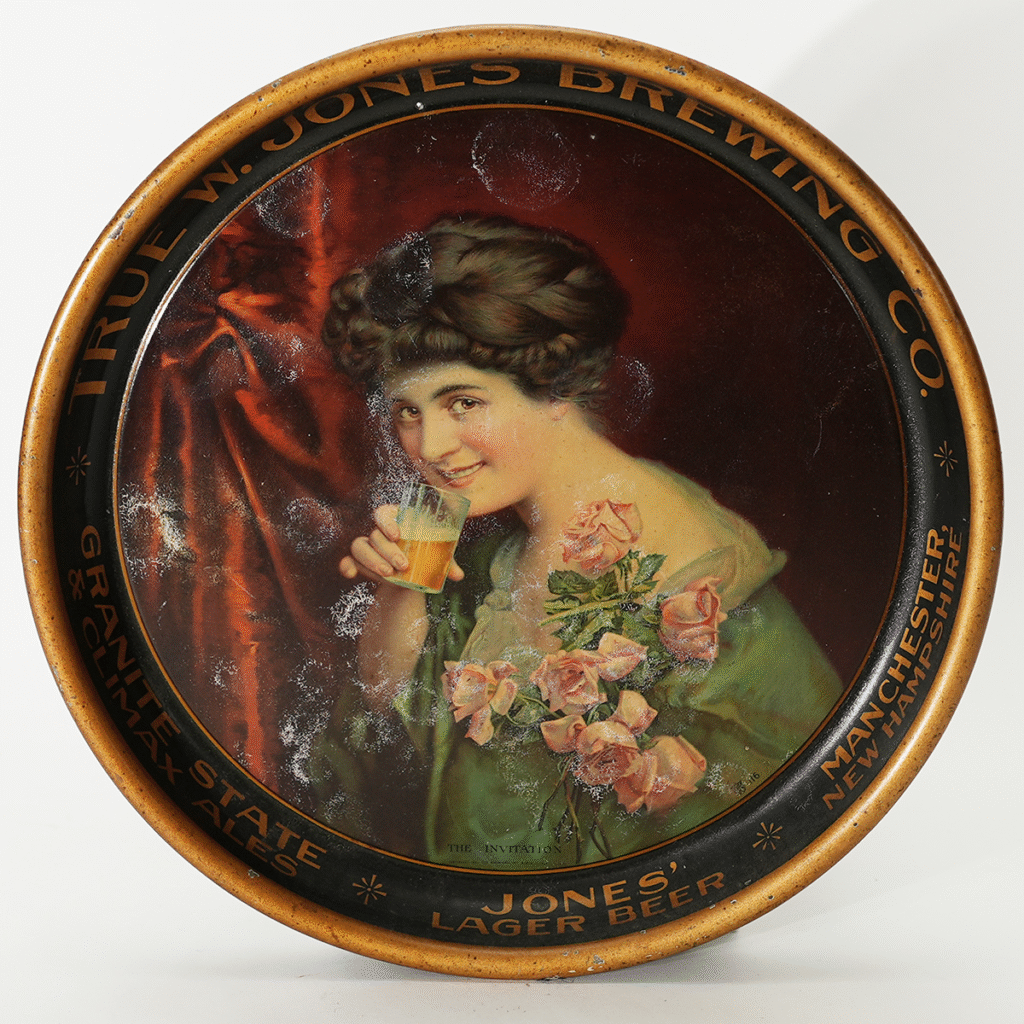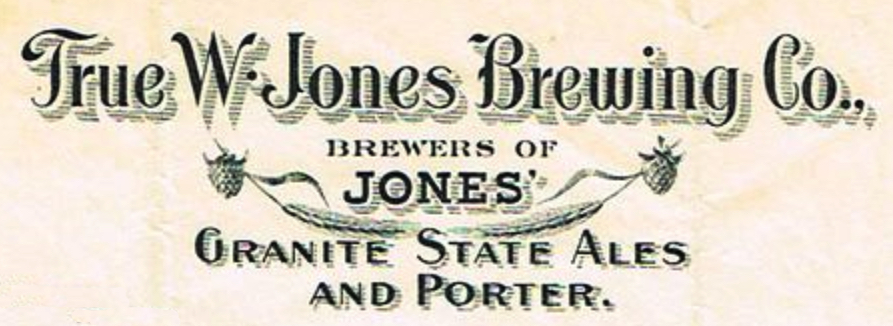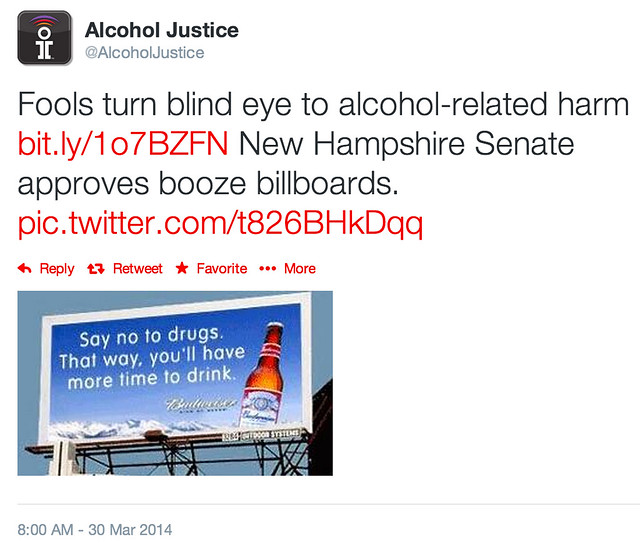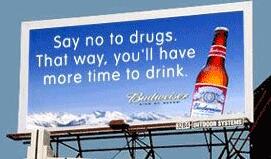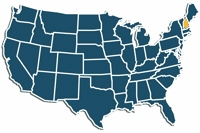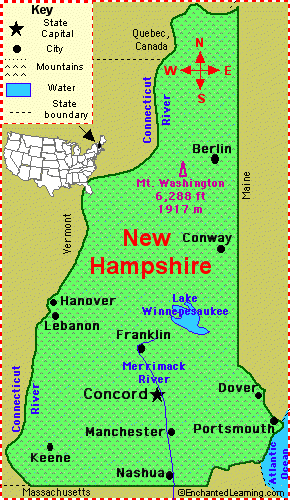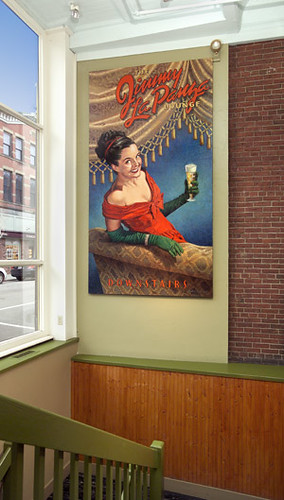
Today is the birthday of Frank Jones (September 15, 1832–October 2, 1902). He was born in New Hampshire and in the 1870s owned the largest brewery in the U.S. He settled in Portsmouth, New Hampshire and after working for his brother for a time, he began working at a brewery. Accounts differ as to whether he simply worked for Englishman John Swindell or if they were partners in the brewery, but after a short time together, Jones became the sole owner of the brewery. According to one timeline, the John Swindells Brewery was founded in 1856, but two years later, in 1858, it became Swindells & Jones Brewery, and a year after that was renamed the Frank Jones Brewery, which it remained until prohibition. After repeal, it reopened as the Eldridge Brewing Co., at least until 1943. Another source says in 1943, it started trading again as the Frank Jones Brewing Co., but closed for good in 1950.

Jones was also active in politics and in 1868 was elected mayor of Portsmouth, N.H. Six years later, in 1874 he was elected to Congress as a Democrat and served two terms, deciding not to run for a third. In 1880, he ran for Governor of New Hampshire, but narrowly lost the race. Later in life, he became disgusted by William Jennings Bryan’s stand on “Free Silver,” and he switched to the Republican party.

Here is a short biography of Jones from Find-a-Grave:
US Congressman. He was active in numerous businesses, most notably a brewery that by the 1870s was the largest ale brewer in the United States. He invested his profits in other ventures, including hotels, banks, and race horses. He was elected Mayor of Portsmouth, New Hampshire in 1867 and served from 1868 to 1869. He was then elected as a Democrat to represent New Hampshire’s 1st Congressional District in the United States House of Representatives, serving from 1875 to 1879. He unsuccessfully ran for New Hampshire Governor in 1880, losing to Charles Henry Bell. He remained active in the Democratic party, and was an advocate for expansion of the Portsmouth Navy Yard. He was a supporter of Grover Cleveland and in 1885 declined President Cleveland’s offer to nominate him for Secretary of the Navy. In the 1890s he sold his brewery to British investors and became active in railroads and insurance. In 1896 he broke with the Democratic party and was a delegate to the 1900 Republican national convention. The Frank Jones Brewing remained in business until Prohibition in 1917; in the 1990s a local microbrewery briefly revived the name, and in 2000 Nutfield Brewing Company reintroduced Frank Jones Ale. The building that housed his brewery is today home to Tecnomatix Unicam, a computer software company.

And this is his biography from Wikipedia:
Frank Jones was born in Barrington, New Hampshire, on September 15, 1832. He attended the public schools in Barrington. He moved to Portsmouth in 1849 and became a successful merchant and brewer. He owned businesses in Portsmouth and South Boston, Massachusetts.
Jones, the mayor of Portsmouth in 1868 and 1869, elected as a Democrat to the Forty-fourth and Forty-fifth Congresses (March 4, 1875 – March 3, 1879) was not a candidate for renomination in 1878. He was the unsuccessful Democratic candidate for Governor of New Hampshire in 1880, losing to Republican Charles Henry Bell by only a few thousand votes, 44,432 to 40,813.
Later, Jones became involved with the Republican Party. He was disgusted over William Jennings Bryan’s stand on Free Silver. He became interested in railroads and hotels. Jones rebuilt the stately Rockingham Hotel in Portsmouth and enlarged the Hotel Wentworth (now Wentworth-by-the-Sea) in New Castle. Also in Portsmouth, Jones built a mansion in the Second Empire style, with gardens and a horse track, completed in 1876.[1] He was a presidential elector on the Republican ticket in 1900. He died in Portsmouth, New Hampshire, on October 2, 1902, and was buried in Harmony Grove Cemetery.
The Frank Jones Brewery was one of the largest producers of ale in the United States of America. In 1896, Jones’ Portsmouth brewery produced about 250,000 barrels a year. In 1889, Jones put his company’s stock on the market in London. The new company was incorporated on May 17, 1889. In 1950, the Frank Jones Brewery closed after 90 years.

This account of the brewery is from “Beer New England,” by Will Anderson:
“Keeping up with the Joneses” was not just an idle expression in turn-of-the-century New Hampshire brewing circles: it was a most difficult task indeed. Dominating Manchester was True Jones; dominating Portsmouth (and scores of other markets, too!) was Frank Jones. The two were brothers, part of a family of seven children born unto Mary and Thomas Jones of Barrington, a small town roughly fifteen miles west of Portsmouth. Frank was the older of the two . . . and it was he who would go on to far and away greater prominence. Little, in fact, is known about True Jones. He appears to have followed Frank (and several other siblings) to Portsmouth, from whence he made his way to the state’s largest city, Manchester. There he, in 1891, gained control of the Carney, Lynch & Company brewery. Changing the name to the True W. Jones Brewing Company, he became king of the Manchester brewing scene. But, then again, that was pretty easy: by the 1890s True W. Jones was the only game in town. He was the only brewer in Manchester. True passed away on October 2, 1899, but the brewery that bore his name continued on until New Hampshire went dry in 1917.
But if little is known about True Jones, lots is known about his older brother. Frank Jones was truly a giant among Granite Staters. Raymond A. Brighton, who chronicled the history of Portsmouth in his THEY CAME TO FISH, devoted an entire chapter to Frank, declaring that, while Portsmouth has had many, many notables in its three-hundred fifty plus years of existence, “none of them dominated their times as completely as did Frank Jones.”
Born in 1832, Frank came to Portsmouth — not to be a brewer, but to work as a tin peddler for his brother Hiram’s hardware and stove business — at age sixteen. Frank was much too ambitious, however, to merely peddle tin for very long. By 1858 he’d involved himself in the brewery of an Englishman named John Swindells. Within little more than a year he owned it. And once he owned it, Frank Jones set out to make his brewery the biggest and best around. He added a malt house in 1863, and a second one in 1879. A new brewhouse was constructed in 1870; in 1878 he added a cooperage department; what were generally believed to be the largest ale and porter storage cellars in the world were built in the early 1880s; and extensive bottling works were constructed in 1900.
What really made Frank Jones a Big Man Around Portsmouth, however, was his outside-of-brewing activities and interests. He was twice elected mayor of his adopted city; served New Hampshire as a two-term Congressman; lost in a bid to become governor by a scant 2,000 votes in 1880; was president of the Boston & Maine Railroad, the Granite State Fire Insurance Company, the Portsmouth Fire Association, and the Portsmouth Shoe Company; and was proprietor of two still extant hotels, the Rockingham (in Portsmouth) and the rather colossal Wentworth-by-the-Sea (in nearby Newcastle).
To again quote Portsmouth historian Brighton: “The man was a legend in his own time.”

This more comprehensive account of the brewery is from Rusty Cans, who also did an exhibition on the Frank Jones Brewery in 2010.
The Frank Jones Brewery was once one of the largest in New England and was founded and headed by a prototypical 19th Century self-made businessman in Portsmouth New Hampshire. This website is centered on cans, and Frank Jones Ale was never sold in cans. However, it remains one of my favorite breweries perhaps because it was New Hampshire’s most prominent brewery and my wife is a Granite State native. Actually, until Anheuser-Busch opened their plant in Merrimack in June 1970 it was the only large brewery to operate in New Hampshire. At any rate, here is the story of the Frank Jones Brewery.

Franklin Jones was born in Barrington, New Hampshire in 1832. He was the fifth of six boys as well as the fifth of seven children in his family. He left home at 16 and moved to Portsmouth and worked as an apprentice in his older brother Hiram’s stove store. Within 3 years he owned an interest in the store and in 1854 he took it over completely. Throughout his life Jones would be active in several businesses at once, a pattern he developed early and in these early years he was also a tin peddler and a rag picker. In 1858 he became partners with John Swindell, an Englishman who had recently moved to Portsmouth to start a brewery producing ale.
Jones’ partnership with Swindell only lasted a few months before Jones owned the entire business including the property and, apparently, the recipe for ale that Swindell was using. A somewhat more ribald story held that Jones, a notorious ladies man, got the recipe for his ale from a housewife he seduced while working as a tin peddler. However he acquired it, Jones’s ale would be a successful and popular product until 1950. Swindell did not do as well. After selling out to Jones he opened another brewery which was not very successful. He died in 1864 when he was hit by a train while pushing a little girl out of its path.

By the time of the Civil War the Frank Jones Brewery was operating profitably and competing with one main rival, the Eldridge Brewing Company founded in Portsmouth in 1864 by Herman Eldridge. The two companies kept up their rivalry until Prohibition. Local Prohibitionist sympathies were strong, but the two breweries had steady business. They even held their own against the many ale-producing breweries in Albany, New York and Boston.
Jones continually expanded his brewery as the centerpiece of his many businesses. The Portsmouth Chronicle published lengthy description of Jones brewery. Ironically, the paper’s publisher, Frank Miller, although a friend of Jones, was also a prohibitionist.

“In connection with this brewery, Mr. Jones has, within a year or two, erected a large building for a malt house, and here the process of brewing (malting) commences. In the bins, lay immense piles of pure Canada barley, 25,000 to 33,000 bushels, certainly, ‘good looking enough to eat as ale does to drink after the batch is made. About 500 bushels of grain is thrown into the great circular wooden water tank, the sides of which are higher than your head, located in the lower room, and soaked for a couple of days. Then, having been winnowed of all bad kernels, peas, other grains, weed seeds, etc., by dipping off these extraneous matters, which all float on the top of the water, and which are sold at a price for light food for horses, and for pigs, hens and etc. … – the soaked and perfect barley are spread on the smooth, clean floor to the depth of six inches or so, and there lies for a few days to swell and sprout, heat and ferment. There are three of these piles or beds of barley, of 500 bushels each, spread over the floor, in different stages of preparation.
(there is no date listed for this quote in Brighton, King of the Ale makers, 39-40, but it was probably written about 1865.)
“From here the grain goes into the drying room, the floor of which is iron, punctured with innumerable little holes, like a strainer or sieve, and the coal fires in the furnaces which are never allowed to go out, day or night, the year round. When entirely dry, the grain, which is now malt, or malted barley, is conveyed to the brewery proper, and cracked in a mill, then soaked again, this time in hot water, pure from the Portsmouth Aqueduct, and placed on another sieve or strainer, and the liquid caught below, which, as extract of barley, is all of the grain which is wanted. The residue is the “Brewers Grain” which is sold for food for animals, and is a valuable manure.
“Hops are now added to this liquid extract in such quantities as to produce ale of desired strength and quality, whether stock, amber or cream; and, after fermenting to the proper point, is barreled for use. In pure ale there is no other ingredient besides these, water and hops. But adulteration by means of “quassis” (the wooden bark of tropical trees) instead of hops, may be made at greatly reduced prices. .. . We understand that Mr. Jones” accommodations, spacious and complete as they are, are by no means sufficient for his increasing business; and he has extensive stables and sheds already in the course of erection, and contemplates considerable additions to his brewery and malt house.”

Jones continued to expand and modernize his brewery over the years. In 1878 Jones added a cooperage (barrel house) and the next year added a second malt house to his brewery. At about the same time Jones bought part partnership of a second brewery in Boston to make ale. In 1883 “The Western Brewer” (a brewer’s trade journal) listed Frank Jones as the largest ale brewer in the country: they had brewed almost 150,000 barrels of ale in 1882. As a result of his increasing demand, Jones begins to develop local springs as a water supply. In 1884 the brew-house was expanded and in 1888 the “Clock Tower” is finished at the brewery. It was 140 feet high, 40 feet taller than the rest of the brewery. The clock face measured 11 feet across and the tower bell weighed over 3,000 lbs. By that time Jones employed over 500 men at his brewery, which probably made him the largest employer in Portsmouth. In 1890 the brewery added a large bottling shop.
Frank Jones ales were so popular that in 1889 he opened a branch office in Boston. In 1875 Jones and his son-in-law and business partner Sinclair together with two other investors bought the Henry Souther & Company brewery in South Boston for $150,000. The Boston brewery then had the capacity to produce 650 barrels a day, a rate which greatly increased over the years. Jones put his brother True W. Jones to run the Boston branch. When one of Jones’ business partners sold out the brewery was renamed the Bay State Brewery. The Boston brewery continued operation until 1905.
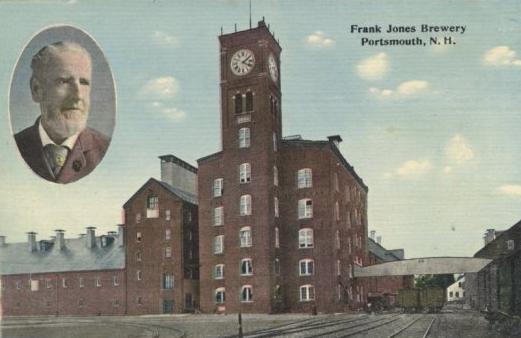
In the 1890s British financial interests began buying American breweries. The 1880s had been a time of expansion for many brewers in the US. When a major depression started in 1893 many brewers found themselves in severe debt. Moreover, the growth in the number of breweries meant that there was more production capacity than demand. As a result, breweries had started to consolidate even before the depression began. In the meantime, stock offerings in European breweries had all been purchased already and British investors were looking for a new outlet. As the Western Brewer noted…
[The British] are tired of investments in oriental bonds, African mining stock, colonical (sic) promotional organizations, etc. There is no money in those affairs, and they are quite risky. Hence American securities attract large attention. But British speculators will not invest in American railroad stocks…nor will they invest in mining stock….American brewery stock is a more stable commodity. (quoted in Baron, Brewed in America 269)
British investors began buying American breweries in the 1880s and when a depression started in the United States in 1893 and brewers began to fall into financial trouble, British investors stepped in even more. A number of the investors would buy all or most of the breweries in a single area, often paying well over market value to corner the market. The buyers would then combine the breweries into one company. Such trusts operated in Baltimore, Chicago, Detroit, Boston, Philadelphia as well as in other cites. Efforts to buy some of the biggest concerns such as Anheuser-Busch, Schlitz and Pabst were rebuffed, however. However, many investors had overpaid for their property. Consumption of beer dropped in 1894 and 1895 due to the depression and the resulting beer price wars in many areas dropped the price of beer drastically. In Chicago, for example, the price per barrel went from $6.00 to $3.50. When the beer tax increased to $2.00 in 1898 to pay for the Spanish-American war over-extended investors began to sell. Finally, the attempted concentration of breweries had meet with resistance from some local brewers and new, independently owned breweries began to be formed to compete with the conglomerates.

Jones’ sale came at the start of this wave of purchases and was a sign of what would be coming. He sold his two breweries for $6,300,00 of which between two and three million was “foreign capital.” He got about 6% in cash and the rest in stock and bonds which were then sold on the British stock market. Jones kept about $500,000 in stock and he remained on the brewer’s board of directors so in effect he remained in charge. The British directors were William Heygate, a director of the Middleton Railway, and English brewers E. Ind and R. Pryor. Jones and his business partner son in law Sinclair made about four million dollars in profit. Jones guaranteed a 15% net annual profit for three years to the buyers.
There was some local discussion of what British control over such a prominent business would mean to Portsmouth but Jones assured the city that he would remain in control. A local newspaper under the control of one of Smith’s Republican rivals charged that he was selling his brewery to the British in order to buy out the Boston & Maine railroad. Jones in fact did become President of the B&M Railroad in 1889, but he had already been on the board of directors. Sale of the brewery, however, undoubtedly did give him more resources for expanding his other businesses including his railroad stock.
The brewery of course continued after Jones died in 1902. In 1903 the Boston plant was closed. The main brewery in Portsmouth, however, continued brewing ale until Prohibition began in New Hampshire in 1917.

The Frank Jones Brewery never reopened after Prohibition. Its equipment was sold off: the Heuther Brewing Company in Ontario bought the bottling equipment. But the brand was reborn when Prohibition ended. Ironically, it was produced by the Eldridge Brewing Company of Portsmouth, Jones’ old rival. From 1933 to 1937 the Eldridge Brewing Company brewed ale in the old Frank Jones plant under the Eldridge name. In 1937 it renamed itself the Frank Jones Brewing Company. Originally their ale was called Eldridge Portsmouth Ale. However, just to continue the confusion, it was brewed with the old Frank Jones formula! In 1937 the ale was also renamed Frank Jones Ale.

In 1947 the brewery was sold to Caldwell, Inc. another New Hampshire company, one which distilled rum. (This is a different company from the present Caldwell, Inc. which manufactures things such as pallet lifters.) Consumers’ tastes were changing, however. Prior to World War II New England and upper New York state were the last holdouts to prefer ale to lager beer. After the war, however, lager beer gained favor in the Northeast and Frank Jones continued losing sales. In 1950 the brewery closed. Some of the buildings still stand in Portsmouth, however, used as offices and shops.

And this fascinating look at their labels is from a 1902 pamphlet entitled “How Good Ale is Brewed.”
